Dry Sliding Wear Studies on Sillimanite and B4C Reinforced Aluminium Hybrid Composites Fabricated by Vacuum Assisted Stir Casting Process
Abstract
1. Introduction
2. Materials and Methods
2.1. Materials
2.2. Fabrication of the Composites
2.3. Characterisation of Dry Sliding Wear
3. Results and Discussion
3.1. Surface Morphology
3.2. Density, Hardness, Tensile Strength and Impact Strength
3.3. Wear Behaviour and Worn Surface of the Composites and Their Hybrids
3.4. Friction Coefficient
4. Conclusions
- The vacuum assisted stir casting process helped to fabricate the primary reinforced and hybrid composite with minimum porosity, i.e., less than 5% for the primary and 10% for the hybrid composite;
- The fabricated specimen had better properties than the pure aluminium. The effect of the 5 wt.% primary reinforcements raised the tensile strength of the specimen up to 20%, whereas a further increase in primary reinforcements reduced the tensile strength of the composites to 34%. The hybrid composites obtained better results than the 10 wt.% reinforced composites; the reduction of tensile strength is up to 30% only;
- The impact strength of the composites was similar to the tensile strength; the 5 wt.% reinforced composites increased the impact strength up to 15%, whereas the impact strength of the 10 wt.% primary reinforced and hybrid composites decreased to 57 and 49%, respectively;
- The hardness of the fabricated specimen increased with the addition of primary and secondary reinforcement when compared to the pure aluminium;
- The specific wear rate of the hybrid composites was lower than the pure aluminium and primary reinforced composites for all cases of sliding velocity and normal load;
- The friction coefficient on pure aluminium increased with the increase in sliding velocity, whereas the friction coefficient of the primary and hybrid composites decreased with an increase in sliding velocity;
- The worn surface of the pure aluminium had a plastic deformation zone and delaminated surface at higher load, whereas the primary and hybrid composites contained only narrow grooves due to the abrasion wear mechanism;
- The surface topography of the pure aluminium and reinforced composites had a rougher surface, whereas the hybrid composites had a smoother surface with regularly spaced peaks and valleys.
Author Contributions
Funding
Institutional Review Board Statement
Informed Consent Statement
Data Availability Statement
Conflicts of Interest
References
- Iacob, G.; Ghica, V.G.; Buzatu, M.; Buzatu, T.; Petrescu, M.I. Studies on wear rate and micro-hardness of the Al/Al2O3/Gr hybrid composites produced via powder metallurgy. Compos. Part B Eng. 2015, 69, 603–611. [Google Scholar] [CrossRef]
- Elango, G.; Raghunath, B.; Palanikumar, K.; Thamizhmaran, K. Sliding wear of LM25 aluminium alloy with 7.5% SiC + 2.5% TiO2 and 2.5% SiC + 7.5% TiO2 hybrid composites. J. Compos. Mater. 2013, 48, 2227–2236. [Google Scholar] [CrossRef]
- Khan, A.H.; Shah, S.A.A.; Umar, F.; Noor, U.; Gul, R.M.; Giasin, K.; Aamir, M. Investigating the microstructural and mechanical properties of novel ternary reinforced AA7075 hybrid metal matrix composite. Materials 2022, 15, 5303. [Google Scholar] [CrossRef] [PubMed]
- Singh, J.; Chauhan, A. Characterization of hybrid aluminum matrix composites for advanced applications—A review. J. Mater. Res. Technol. 2016, 5, 159–169. [Google Scholar] [CrossRef]
- Umanath, K.; Selvamani, S.T.; Palanikumar, K. Friction and wear behavior of Al6061 alloy (SiCP + Al2O3P) hybrid composites. Int. J. Eng. Sci. 2011, 3, 5441–5451. [Google Scholar]
- Asif, M.; Chandra, K.; Misra, P. Development of Aluminium Based Hybrid Metal Matrix Composites for Heavy Duty Applications. J. Miner. Mater. Charact. Eng. 2011, 10, 1337–1344. [Google Scholar] [CrossRef]
- Mahendra, K.V.; Radhakrishna, K. Characterization of stir cast Al-Cu-(fly ash + SiC) hybrid metal matrix Composites. J. Compos. Mater. 2010, 44, 989–1005. [Google Scholar] [CrossRef]
- Mohanty, R.; Balasubramanian, K.; Seshadri, S. Boron carbide-reinforced alumnium 1100 matrix composites: Fabrication and properties. Mater. Sci. Eng. A 2008, 498, 42–52. [Google Scholar] [CrossRef]
- Baradeswaran, A.; Perumal, A.E. Influence of B4C on the tribological and mechanical properties of Al 7075–B4C composites. Compos. Part B Eng. 2013, 54, 146–152. [Google Scholar] [CrossRef]
- Macke, A.; Schultz, B.F. Metal matrix composites offer the automotive industry and opportunity to reduce vehicle weight, Improve Performance. Adv. Mater. Process. 2012, 170, 19–23. [Google Scholar]
- Prabu, S.B.; Karunamoorthy, L.; Kathiresan, S.; Mohan, B. Influence of stirring speed and stirring time on distribution of particles in cast metal matrix composite. J. Mater. Process. Technol. 2006, 171, 268–273. [Google Scholar] [CrossRef]
- Pramanik, A. Effects of reinforcement on wear resistance of aluminum matrix composites. Trans. Nonferrous Met. Soc. China 2016, 26, 348–358. [Google Scholar] [CrossRef]
- Stojanovic, B.; Epler, I. Application of Aluminum and Aluminum Alloys in Engineering. Appl. Eng. Lett. J. Eng. Appl. Sci. 2018, 3, 52–62. [Google Scholar] [CrossRef]
- Goni, J.; Mitxelena, I.; Coleto, J. Development of low cost metal matrix composites for commercial applications. Mater. Sci. Technol. 2000, 16, 743–746. [Google Scholar] [CrossRef]
- Safiuddin, M.; Zamin, J.M. Utilization of solid wastes in construction materials. Int. J. Phys. Sci. 2010, 5, 1952–1963. [Google Scholar]
- Alidokht, S.; Abdollah-Zadeh, A.; Soleymani, S.; Assadi, H. Microstructure and tribological performance of an aluminium alloy based hybrid composite produced by friction stir processing. Mater. Des. 2011, 32, 2727–2733. [Google Scholar] [CrossRef]
- Rajesh, S.; Rajakarunakaran, S.; Suthakarapandian, R.; Pitchipoo, P. MOORA-Based tribological studies on red mud reinforced aluminum metal matrix composites. Adv. Tribol. 2013, 2013, 213914. [Google Scholar] [CrossRef]
- Arslan, G.; Kara, F.; Turan, S. Reaction model for the boron carbide/aluminium system. Key Eng. Mater. 2004, 264–268, 1059–1062. [Google Scholar] [CrossRef]
- Singh, M.; Mondal, D.; Das, S. Abrasive wear response of aluminium alloy–sillimanite particle reinforced composite under low stress condition. Mater. Sci. Eng. A 2006, 419, 59–68. [Google Scholar] [CrossRef]
- Singh, M.; Mondal, D.P.; Dasgupta, R.; Prasad, B.K.; Jha, A.K.; Yegneswaran, A.H. Effect of sillimanite particle reinforcement on dry sliding wear behaviour of aluminium alloy composite. Mater. Sci. Technol. 2003, 19, 303–312. [Google Scholar] [CrossRef]
- Arora, R.; Kumar, S.; Singh, G.; Pandey, O.P. Role of Different Range of Particle Size on Wear Characteristics of Al–Rutile Composites. Part. Sci. Technol. 2014, 33, 229–233. [Google Scholar] [CrossRef]
- Kumar, S.; Panwar, R.S.; Pandey, O. Effect of dual reinforced ceramic particles on high temperature tribological properties of aluminum composites. Ceram. Int. 2013, 39, 6333–6342. [Google Scholar] [CrossRef]
- Sharma, S.; Nanda, T.; Pandey, O.P. Effect of particle size on dry sliding wear behaviour of sillimanite reinforced aluminium matrix composites. Ceram. Int. 2018, 44, 104–114. [Google Scholar] [CrossRef]
- Singh, M.; Mondal, D.P.; Jha, A.K.; Das, S.; Yegneswaran, A.H. Preparation and properties of cast aluminium alloy–sillimanite particle composite. Compos. Part A Appl. Sci. Manuf. 2001, 32, 787–795. [Google Scholar] [CrossRef]
- Singh, M.; Mondal, D.P.; Modi, O.P.; Jha, A.K. Two-body abrasive wear behaviour of aluminium alloy–sillimanite particle reinforced composite. Wear 2002, 253, 357–368. [Google Scholar] [CrossRef]
- Lee, D.; Kim, J.; Lee, S.-K.; Kim, Y.; Lee, S.-B.; Cho, S. Effect of Boron Carbide Addition on Wear Resistance of Aluminum Matrix Composites Fabricated by Stir Casting and Hot Rolling Processes. Metals 2021, 11, 989. [Google Scholar] [CrossRef]
- Topcu, I.; Gulsoy, H.; Kadioglu, N.; Gulluoglu, A. Processing and mechanical properties of B4C reinforced Al matrix composites. J. Alloys Compd. 2009, 482, 516–521. [Google Scholar] [CrossRef]
- Singh, G.; Goyal, S. Dry sliding wear behaviour of AA6082-T6/SiC/B4C hybrid metal matrix composites using response surface methodology. Proc. Inst. Mech. Eng. Part L J. Mater. Des. Appl. 2016, 232, 952–964. [Google Scholar] [CrossRef]
- Monikandan, V.V.; Joseph, M.A.; Rajendrakumar, P.K. Dry sliding wear studies of aluminum matrix hybrid composites. Resour. Technol. 2016, 2, 12–24. [Google Scholar] [CrossRef]
- Baradeswaran, A.; Vettivel, S.; Perumal, A.E.; Selvakumar, N.; Issac, R.F. Experimental investigation on mechanical behaviour, modelling and optimization of wear parameters of B4C and graphite reinforced aluminium hybrid composites. Mater. Des. 2014, 63, 620–632. [Google Scholar] [CrossRef]
- Ramnath, B.V.; Elanchezhian, C.; Jaivignesh, M. Evaluation of mechanical properties of aluminium alloy–alumina–boron carbide metal matrix composites. Mater. Des. 2014, 58, 332–338. [Google Scholar] [CrossRef]
- Pranavi, U.; Venkateshwar Reddy, P.; Venukumar, S.; Cheepu, M. Evaluation of mechanical and wear properties of Al5059/B4C/Al2O3 hybrid metal matrix composites. J. Compos. Sci. 2022, 6, 86. [Google Scholar] [CrossRef]
- Subramanian, K.; Murugesan, S.; Mohan, D.G.; Tomków, J. Study on dry sliding wear and friction behaviour of Al7068/Si3N4/BN hybrid composites. Materials 2021, 14, 6560. [Google Scholar] [CrossRef]
- Rahimian, M.; Parvin, N.; Ehsani, N. The effect of production parameters on microstructure and wear resistance of powder metallurgy Al–Al2O3 composite. Mater. Des. 2011, 32, 1031–1038. [Google Scholar] [CrossRef]
- Niemczewska-Wójcik, M.; Pethuraj, M.; Uthayakumar, M.; Majid, M.S.A. Characteristics of the Surface Topography and Tribological Properties of Reinforced Aluminum Matrix Composite. Materials 2022, 15, 358. [Google Scholar] [CrossRef]
- Agarwal, B.D.; Broutman, L.J.; Chandrashekhara, K. Analysis and Performance of Fiber Composites; John Wiley & Sons: Hoboken, NJ, USA, 2017. [Google Scholar]
- Chawla, N.; Chawla, K.K. Metal Matrix Composites; Springer: Berlin/Heidelberg, Germany, 2013. [Google Scholar]
- Alaneme, K.K.; Ademilua, B.O.; Bodunrin, M.O. Mechanical properties and corrosion behaviour of aluminium hybrid composites reinforced with silicon carbide and bamboo leaf ash. Tribol. Ind. 2013, 35, 25–35. [Google Scholar]
- Kok, M. Production and mechanical properties of Al2O3 particle-reinforced 2024 aluminium alloy composites. J. Mater. Process. Technol. 2005, 161, 381–387. [Google Scholar] [CrossRef]
- Milan, M.T.; Bowen, P. Tensile and Fracture Toughness Properties of SiCp Reinforced Al Alloys: Effects of Particle Size, Particle Volume Fraction, and Matrix Strength. J. Mater. Eng. Perform. 2004, 13, 775–783. [Google Scholar] [CrossRef]
- Surappa, M.K. Synthesis of fly ash particle reinforced A356 Al composites and their characterization. Mater. Sci. Eng. A 2008, 480, 117–124. [Google Scholar]
- Mathalai Sundaram, C.; Radha Krishnan, B.; Harikishore, S.; Vijayan, V. Wear behavior of B4C reinforced Al6063 matrix composite electrodes fabricated by stir casting method. Trans. Can. Soc. Mech. Eng. 2020, 45, 199–210. [Google Scholar] [CrossRef]
- Ipek, R. Adhesive wear behaviour of B4C and SiC reinforced 4147 Al matrix composites (Al/B4C–Al/SiC). J. Mater. Process. Technol. 2005, 162, 71–75. [Google Scholar] [CrossRef]
- Guleryuz, F.; Uzunsoy, D.; Ipek, R. Dry Sliding Wear Behavior of Al-B4C Particulate Reinforced Composites Produced by Powder Metallurgy Method; No. 2013-01-0379; SAE Technical Paper: Warrendale, PA, USA, 2013. [Google Scholar]
- Ayyanar, S.; Gnanavelbabu, A.; Rajkumar, K.; Loganathan, P. Studies on high temperature wear and friction behaviour of AA6061/B4C/hBN hybrid composites. Met. Mater. Int. 2021, 27, 3040–3057. [Google Scholar] [CrossRef]
- Mazaheri, Y.; Meratian, M.; Emadi, R.; Najarian, A.R. Comparison of microstructural and mechanical properties of Al–TiC, Al–B4C and Al–TiC–B4C composites prepared by casting techniques. Mater. Sci. Eng. A 2013, 560, 278–287. [Google Scholar] [CrossRef]
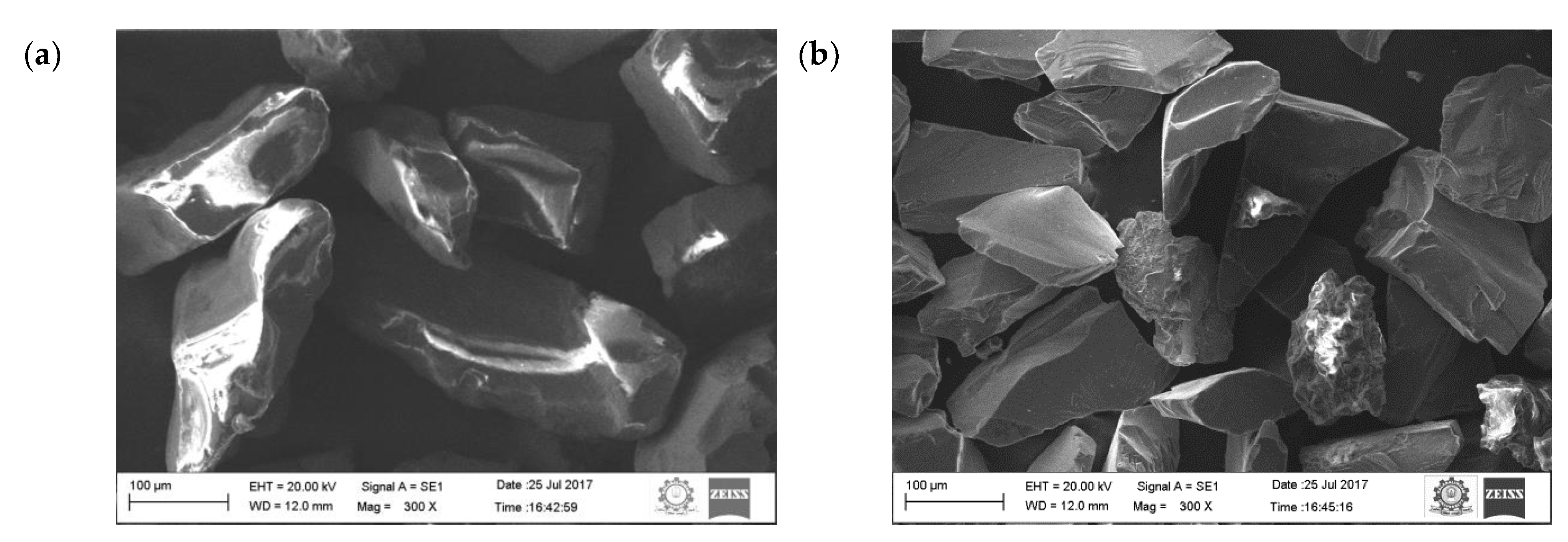


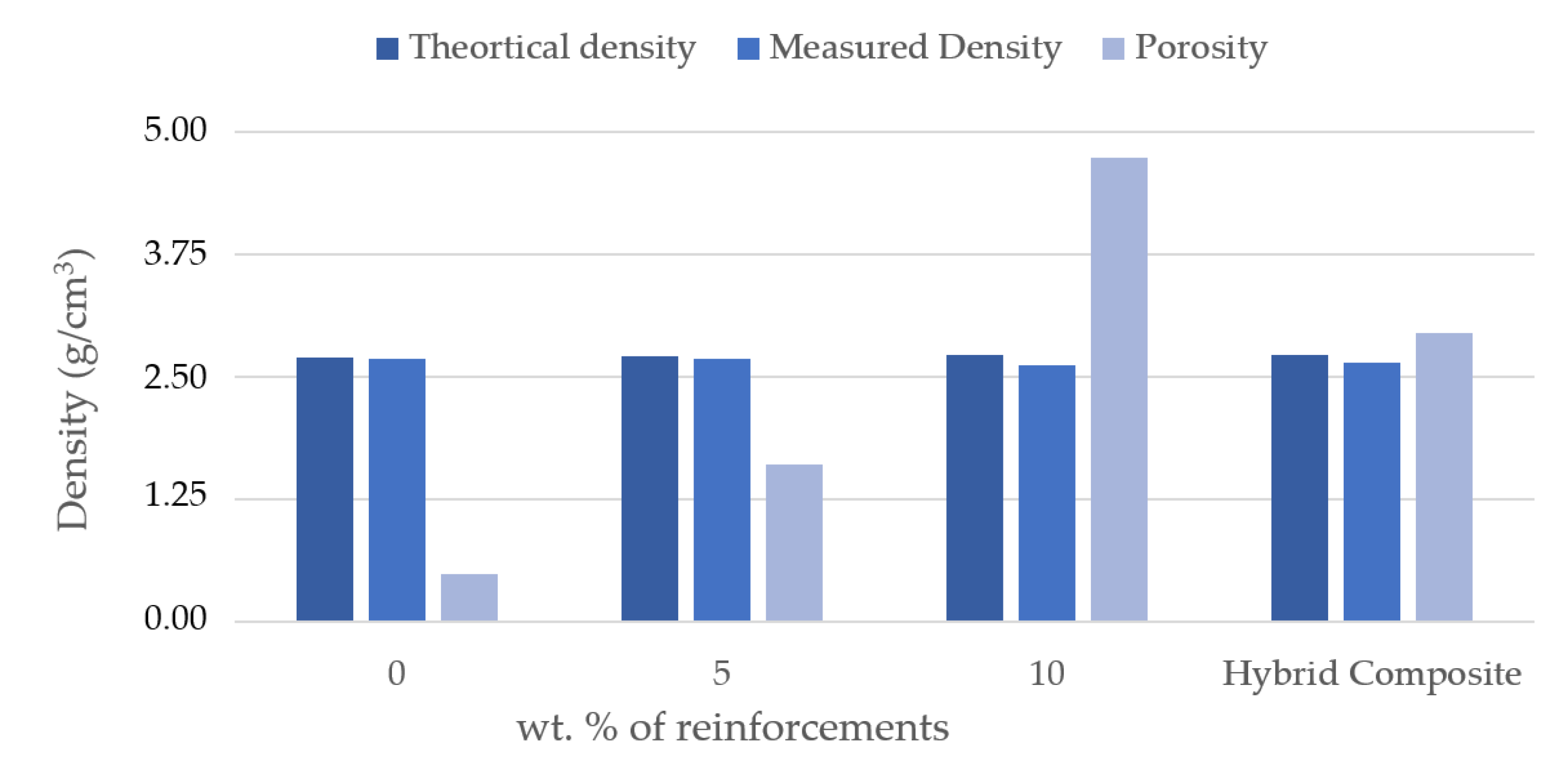
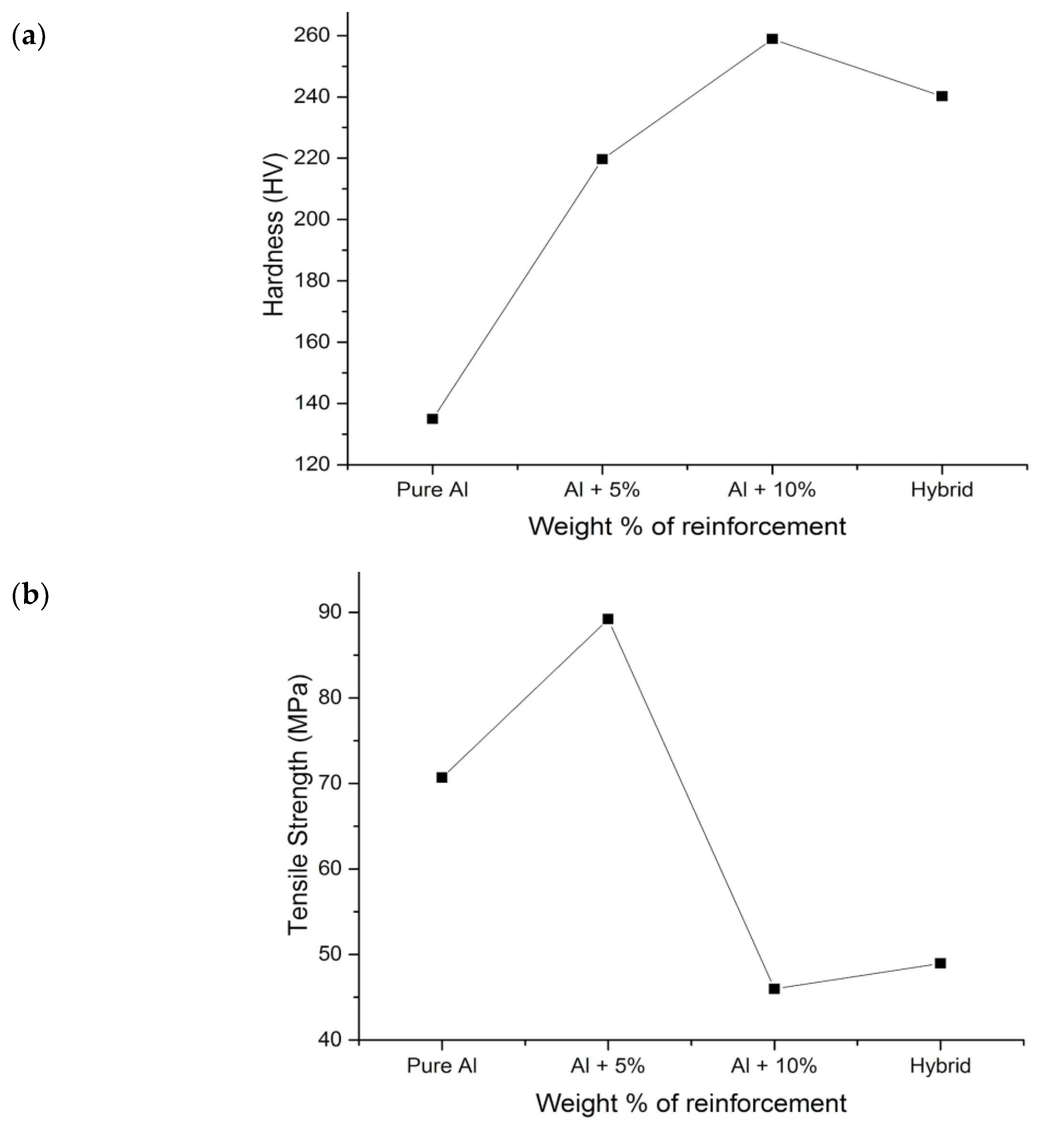

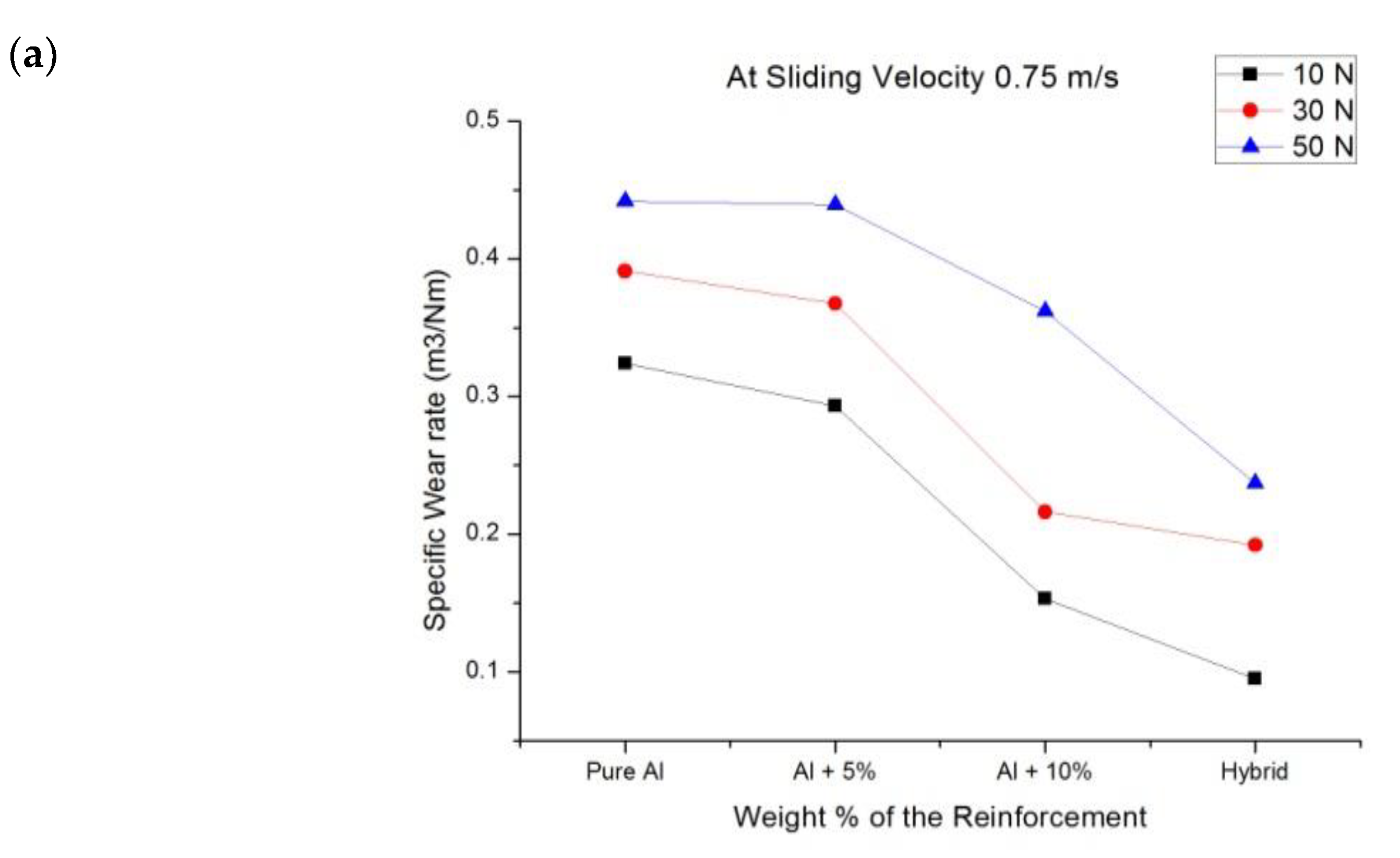




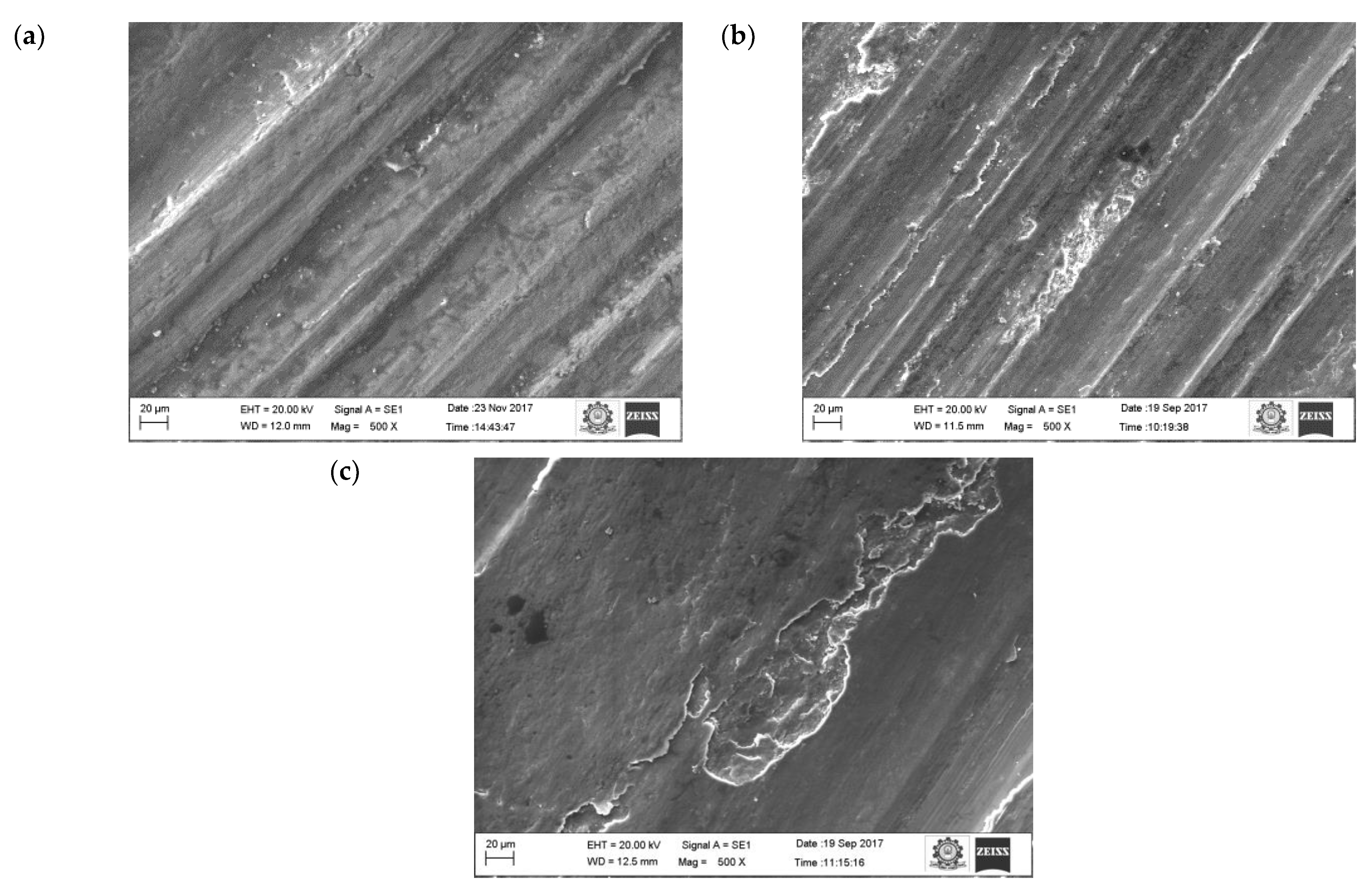


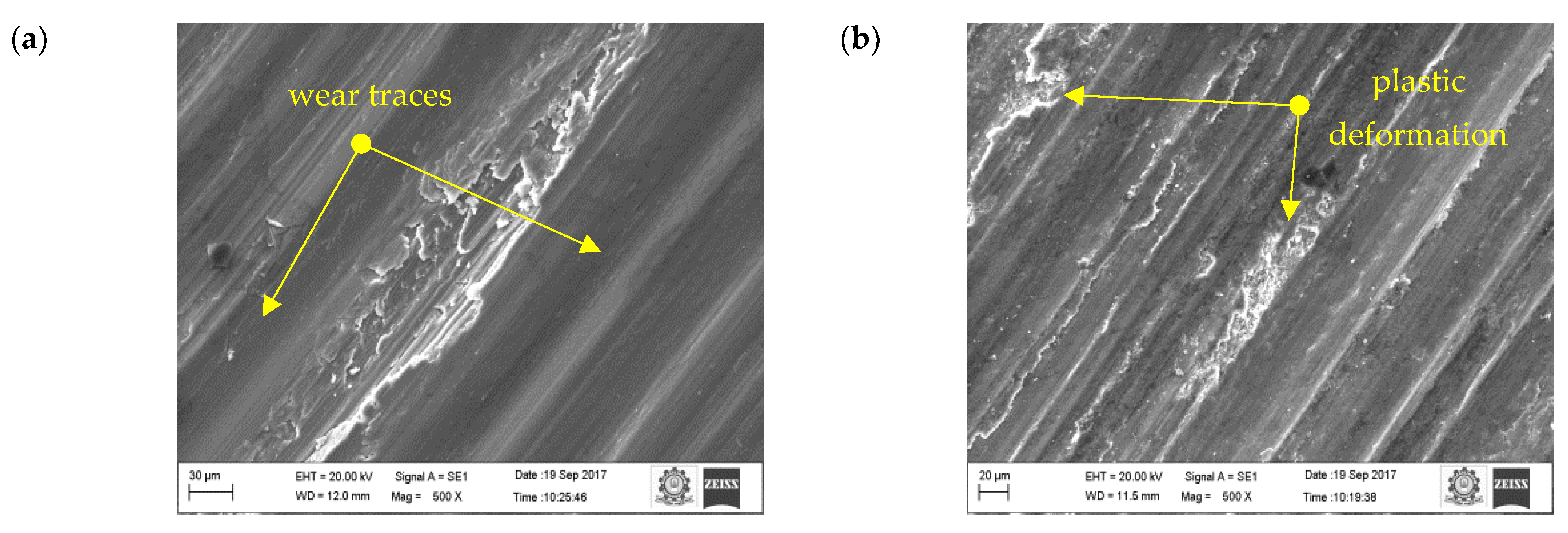

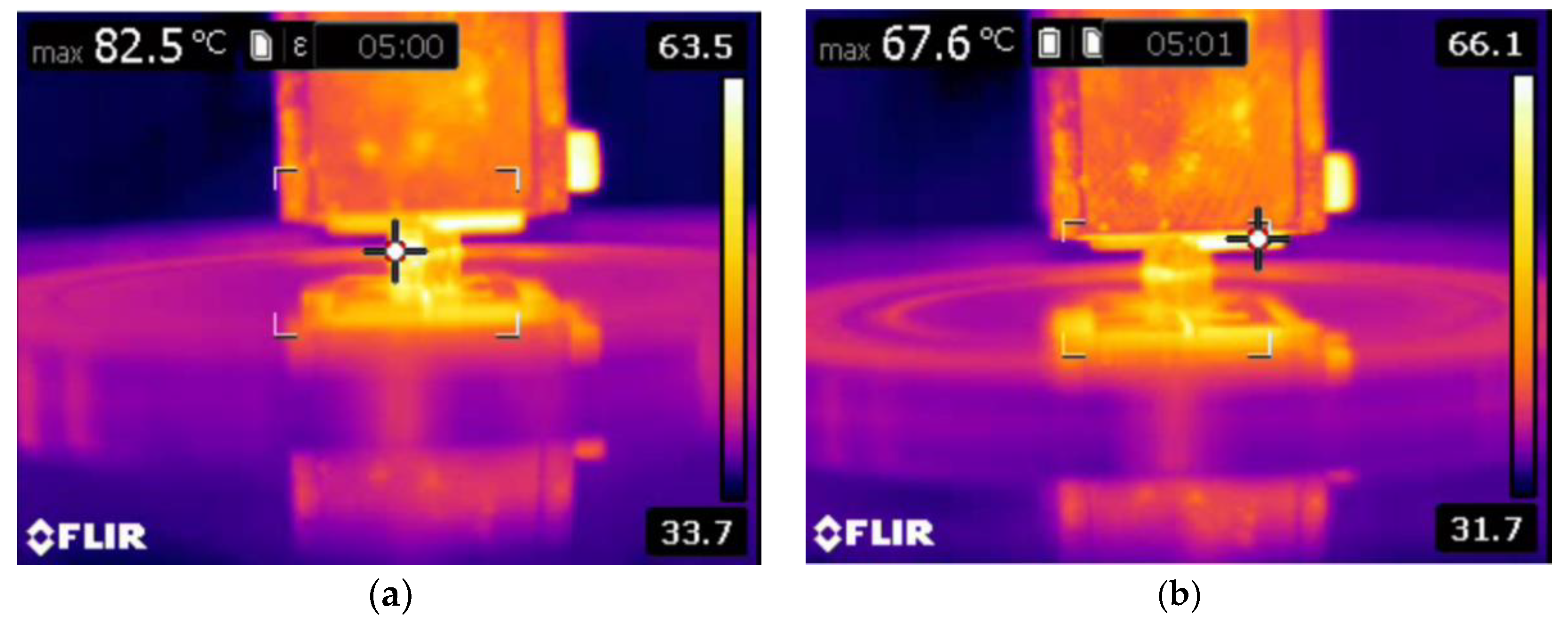
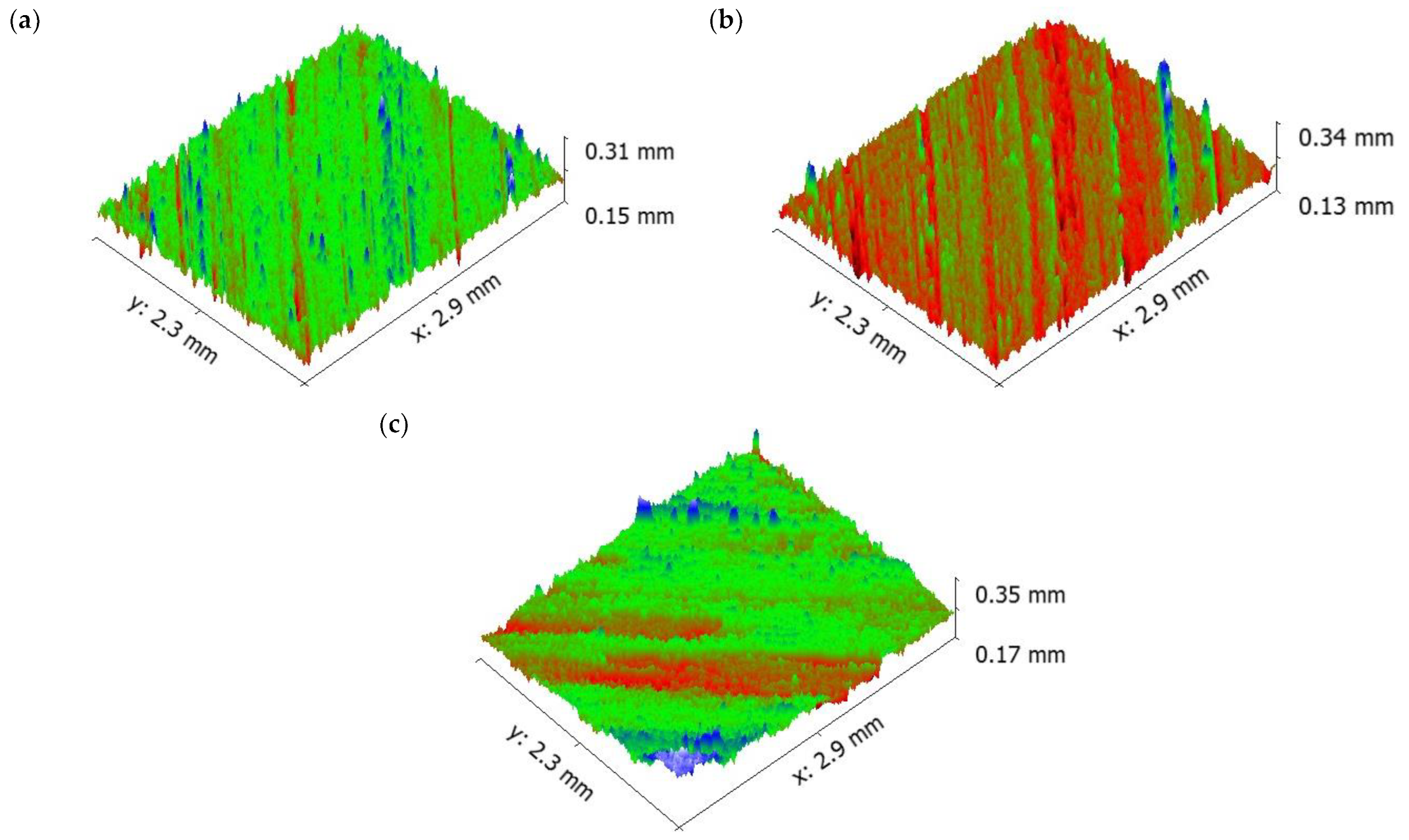
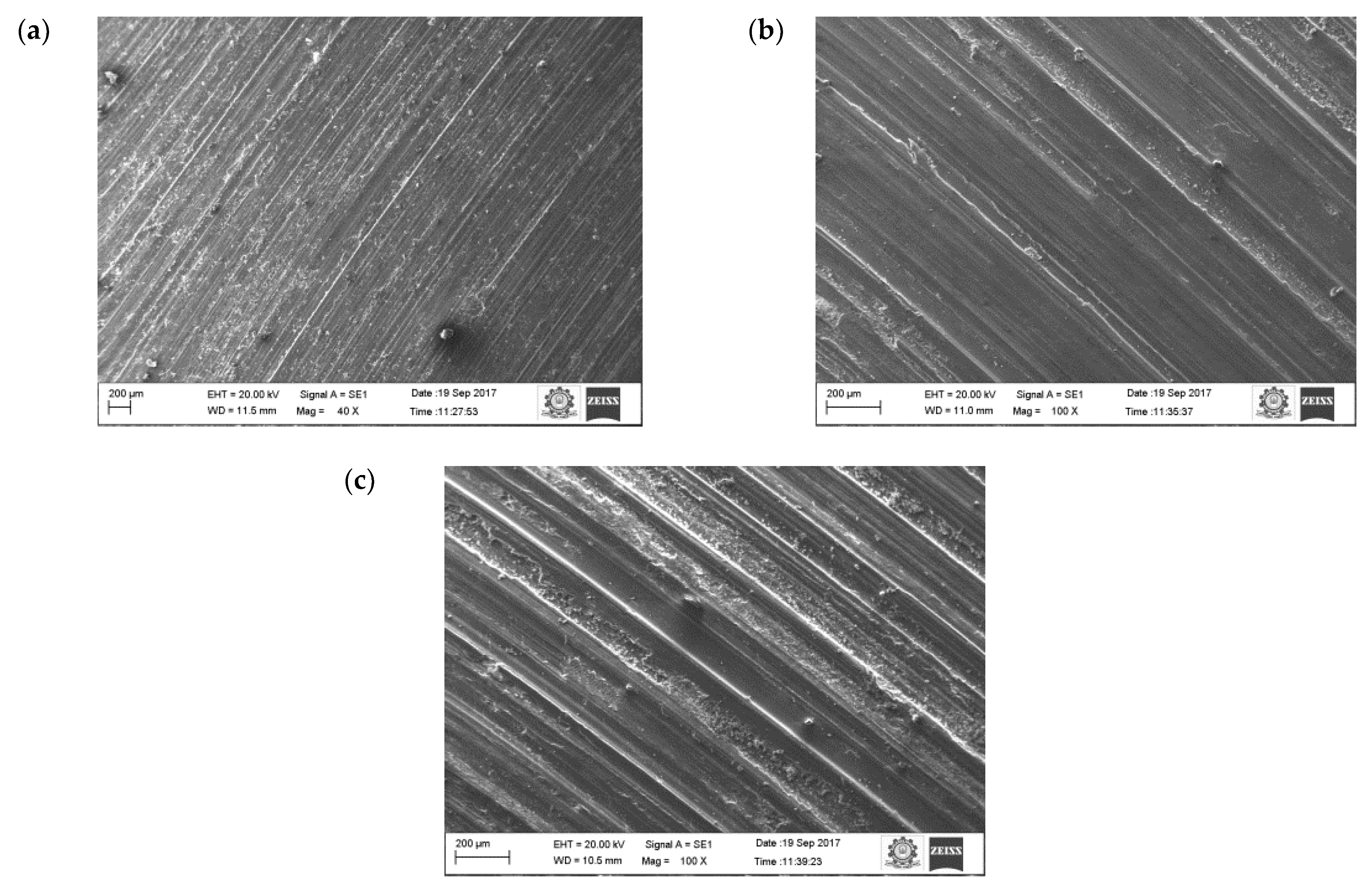


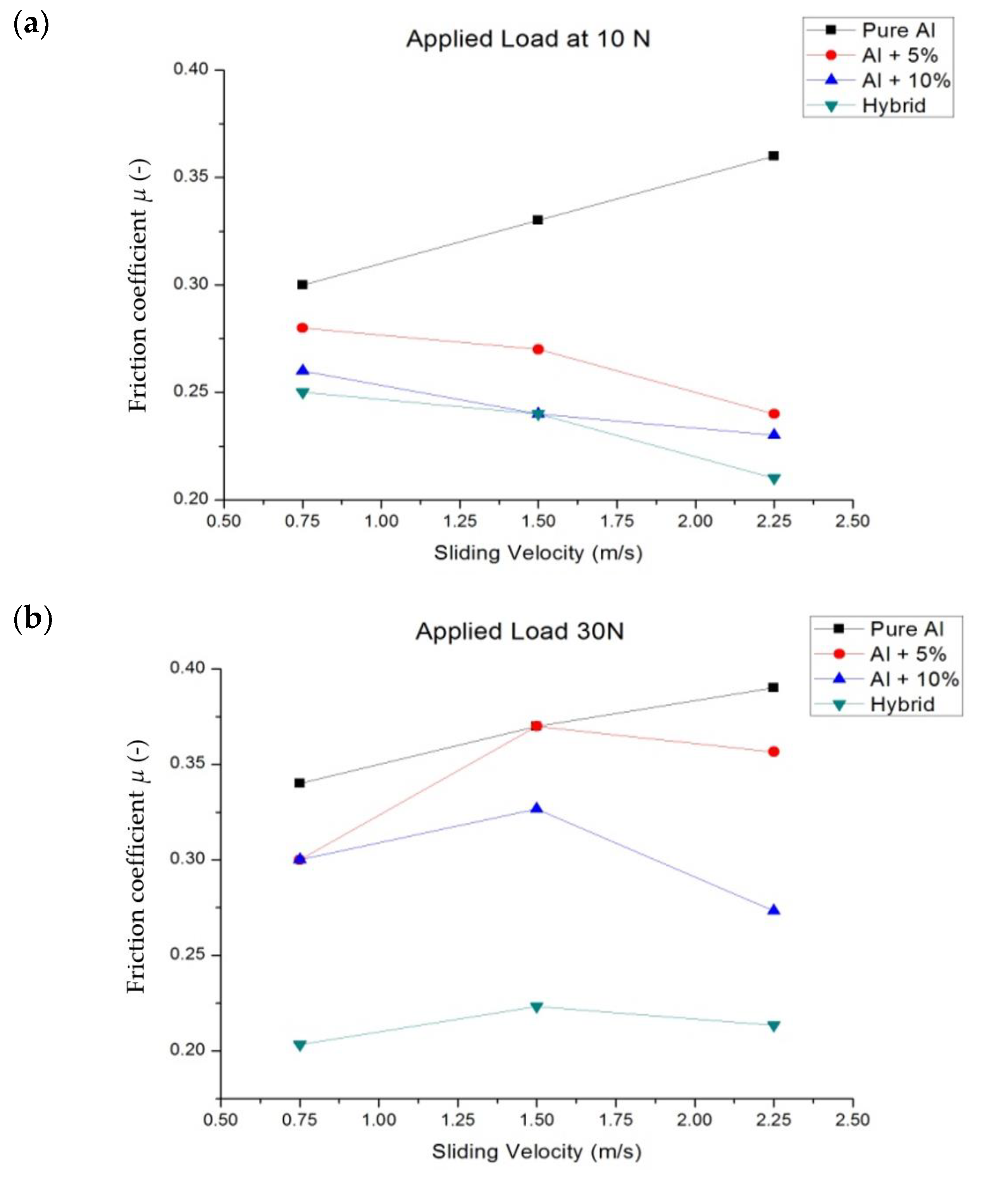

| Elements | Al2O3 | SiO2 | TiO2 | ZrO2 | Fe2O3 | CaO | MgO |
|---|---|---|---|---|---|---|---|
| wt.% | 55–58 | 37–38 | 0.25–0.64 | 2.20–3.50 | 0.30–0.40 | 0.01–0.02 | 0.03–0.04 |
| Properties | Aluminium | Sillimanite | B4C |
|---|---|---|---|
| Density (g/cm3) | 2.70 | 3.24 | 2.30–2.52 |
| Hardness (kg/mm2) | 17.02 | 7 | 3000 |
| Elastic modulus (GPa) | 80 | 159 | 362–427 |
| Melting point (°C) | 660 | 1850 | 2450 |
| Coefficient of thermal expansion (10−6/°C) | 2.20 | 4.50 | 3.2 |
Disclaimer/Publisher’s Note: The statements, opinions and data contained in all publications are solely those of the individual author(s) and contributor(s) and not of MDPI and/or the editor(s). MDPI and/or the editor(s) disclaim responsibility for any injury to people or property resulting from any ideas, methods, instructions or products referred to in the content. |
© 2022 by the authors. Licensee MDPI, Basel, Switzerland. This article is an open access article distributed under the terms and conditions of the Creative Commons Attribution (CC BY) license (https://creativecommons.org/licenses/by/4.0/).
Share and Cite
Pethuraj, M.; Uthayakumar, M.; Rajesh, S.; Abdul Majid, M.S.; Rajakarunakaran, S.; Niemczewska-Wójcik, M. Dry Sliding Wear Studies on Sillimanite and B4C Reinforced Aluminium Hybrid Composites Fabricated by Vacuum Assisted Stir Casting Process. Materials 2023, 16, 259. https://doi.org/10.3390/ma16010259
Pethuraj M, Uthayakumar M, Rajesh S, Abdul Majid MS, Rajakarunakaran S, Niemczewska-Wójcik M. Dry Sliding Wear Studies on Sillimanite and B4C Reinforced Aluminium Hybrid Composites Fabricated by Vacuum Assisted Stir Casting Process. Materials. 2023; 16(1):259. https://doi.org/10.3390/ma16010259
Chicago/Turabian StylePethuraj, Manickaraj, Marimuthu Uthayakumar, Shanmugavel Rajesh, Mohd Shukry Abdul Majid, Sivaprakasam Rajakarunakaran, and Magdalena Niemczewska-Wójcik. 2023. "Dry Sliding Wear Studies on Sillimanite and B4C Reinforced Aluminium Hybrid Composites Fabricated by Vacuum Assisted Stir Casting Process" Materials 16, no. 1: 259. https://doi.org/10.3390/ma16010259
APA StylePethuraj, M., Uthayakumar, M., Rajesh, S., Abdul Majid, M. S., Rajakarunakaran, S., & Niemczewska-Wójcik, M. (2023). Dry Sliding Wear Studies on Sillimanite and B4C Reinforced Aluminium Hybrid Composites Fabricated by Vacuum Assisted Stir Casting Process. Materials, 16(1), 259. https://doi.org/10.3390/ma16010259









